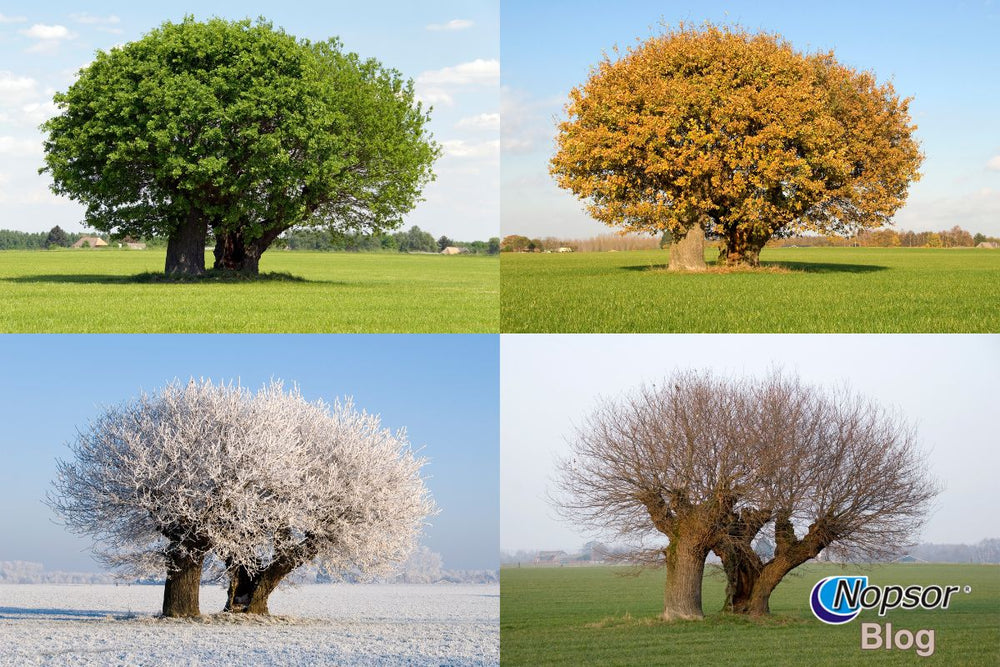How to Handle Psoriasis Flare-Ups in Different Seasons

Why Winter Triggers Psoriasis Flare-Ups
❄ Cold temperatures = dry, cracked skin.
🔥 Indoor heating removes moisture from the air, worsening dryness.
🧣 Heavy clothing can trap heat and cause irritation.
🌧 Less sun exposure means lower Vitamin D levels, which can increase inflammation.
Winter Skincare & Lifestyle Tips
✔ Moisturize Religiously – Apply a thick, fragrance-free moisturizer immediately after showering.
✔ Use a Humidifier – Keeps indoor air moist and prevents skin from drying out.
✔ Take Short, Lukewarm Showers – Hot water strips natural oils, making psoriasis worse.
✔ Layer with Soft Fabrics – Avoid wool and polyester, which can irritate plaques.
✔ Consider a Vitamin D Supplement – Helps counteract reduced sunlight exposure.
💡 Pro Tip: Use Nopsor’s natural treatment with coal tar and salicylic acid to keep scaling and inflammation under control during winter months. Learn more at www.nopsor-usa.com.
Spring: Managing Allergy Triggers & Temperature Changes
Why Spring Can Affect Psoriasis
🌱 Pollen and allergens can trigger immune responses, worsening inflammation.
🌦 Unpredictable weather shifts can dry out or irritate the skin.
🌸 More sun exposure may help some people, but overexposure can cause flare-ups.
Spring Skincare & Lifestyle Tips
✔ Protect Against Allergens – Wash clothes frequently and keep bedding clean to reduce pollen exposure.
✔ Hydrate Your Skin – Moisturize consistently as temperatures shift.
✔ Use Sunscreen – If spending more time outside, wear SPF 30+ on unaffected areas.
✔ Adjust Your Diet – Eat anti-inflammatory foods like fatty fish, leafy greens, and berries.
💡 Pro Tip: If you have seasonal allergies, talk to your doctor about safe antihistamines that won’t trigger flare-ups.
Summer: Preventing Sunburn, Sweat, and Heat Triggers
Why Summer Affects Psoriasis
☀ Sun exposure can help reduce inflammation but also cause sunburns.
🌡 Sweating can lead to itching and irritation.
🏊 Chlorine and saltwater can dry out skin or cause sensitivity.
Summer Skincare & Lifestyle Tips
✔ Use Sunscreen Wisely – SPF 30+ is essential for protecting healthy skin.
✔ Rinse After Swimming – Both chlorine and saltwater can irritate psoriasis.
✔ Stay Cool & Dry – Wear breathable cotton clothing and avoid synthetic fabrics that trap sweat.
✔ Hydrate Inside & Out – Drink plenty of water and use a lightweight moisturizer.
✔ Avoid Overexposure to UV Rays – Too much sun can trigger flares.
💡 Pro Tip: Look for eczema-friendly or psoriasis-safe swimwear brands that are designed to reduce irritation.
Fall: Transitioning Your Skincare Routine for Cooler Months
Why Fall Can Trigger Flare-Ups
🍂 Humidity drops, leading to drier skin.
🌬 Wind exposure can cause redness and irritation.
💡 Seasonal stress (back-to-school, work pressure) may increase flare-ups.
Fall Skincare & Lifestyle Tips
✔ Start Using a Thicker Moisturizer – Switch to heavier creams as temperatures drop.
✔ Prepare for Temperature Swings – Layer soft, breathable clothing to adjust to changing weather.
✔ Keep Stress Levels Low – Meditation, yoga, or deep breathing can help prevent flare-ups.
✔ Increase Omega-3 Intake – Helps reduce inflammation during seasonal changes.
💡 Pro Tip: If your psoriasis flares in fall, consider adjusting your skincare and diet before the season changes to prevent worsening symptoms.
Year-Round Psoriasis Care: Staying Consistent
No matter the season, some habits remain essential for keeping psoriasis under control:
✔ Moisturize Daily – Prevents dryness and irritation year-round.
✔ Use Hypoallergenic Skincare – Avoids fragrances and harsh chemicals.
✔ Eat an Anti-Inflammatory Diet – Reduces internal inflammation that can trigger flare-ups.
✔ Track Your Flare-Ups – Keeping a journal of seasonal triggers helps you adjust your routine proactively.
✔ Stay Hydrated – Both internally (water) and externally (humidifiers, lotions).
💡 Pro Tip: If seasonal changes severely impact your psoriasis, speak with your dermatologist about adjusting treatment plans before flare-ups start.
Final Thoughts: Adjust, Adapt, and Stay Ahead of Flare-Ups
Psoriasis symptoms change with the seasons, but your routine can adapt to keep your skin calm and comfortable:
✔ Winter: Lock in moisture, use a humidifier, and layer wisely.
✔ Spring: Protect against allergens and start light sun exposure.
✔ Summer: Use sunscreen, stay cool, and rinse after swimming.
✔ Fall: Switch to thicker creams and prepare for temperature swings.
By adjusting your skincare and lifestyle each season, you can prevent flare-ups before they start—helping you feel confident and comfortable all year long.
For natural, steroid-free psoriasis relief, explore Nopsor’s treatment, formulated with coal tar and salicylic acid to support psoriasis-prone skin. Learn more at www.nopsor-usa.com.
References
-
Medical News Today - Seasonal Psoriasis: Treatment Tips for Each Season
This article explores how to manage psoriasis symptoms throughout the year, offering specific strategies for each season to help minimize flare-ups. -
WebMD - Psoriasis in Fall and Winter: Symptoms, Triggers, Treatments
This resource discusses how colder seasons can affect psoriasis, detailing symptoms, potential triggers, and treatments to manage flare-ups during fall and winter. -
National Psoriasis Foundation - Seasonal Flares Guide
This guide provides insights into how seasonal changes can impact psoriasis symptoms and offers tips on clothing, skin products, and strategies to minimize flares during different seasons.


Leave a comment
Also in Psoriasis Lifestyle Tips
What to Do When You Feel ‘Undateable’ Because of Psoriasis
August 19, 2025
When psoriasis makes you feel unworthy of love, rejection can feel personal. This guide helps you rebuild your confidence, one gentle truth at a time.
Continue reading
Real Stories: Dating Rejections and How People Bounced Back
July 07, 2025
Ghosted, judged, dismissed these real stories reveal the emotional weight of dating rejection with psoriasis, and how people found the courage to move forward.
Continue reading
Can You Be Intimate with Psoriasis? What You Need to Know
July 06, 2025
Worried that psoriasis might get in the way of intimacy? Learn how to prepare, communicate, and feel confident in your body and relationships right now.
Continue reading